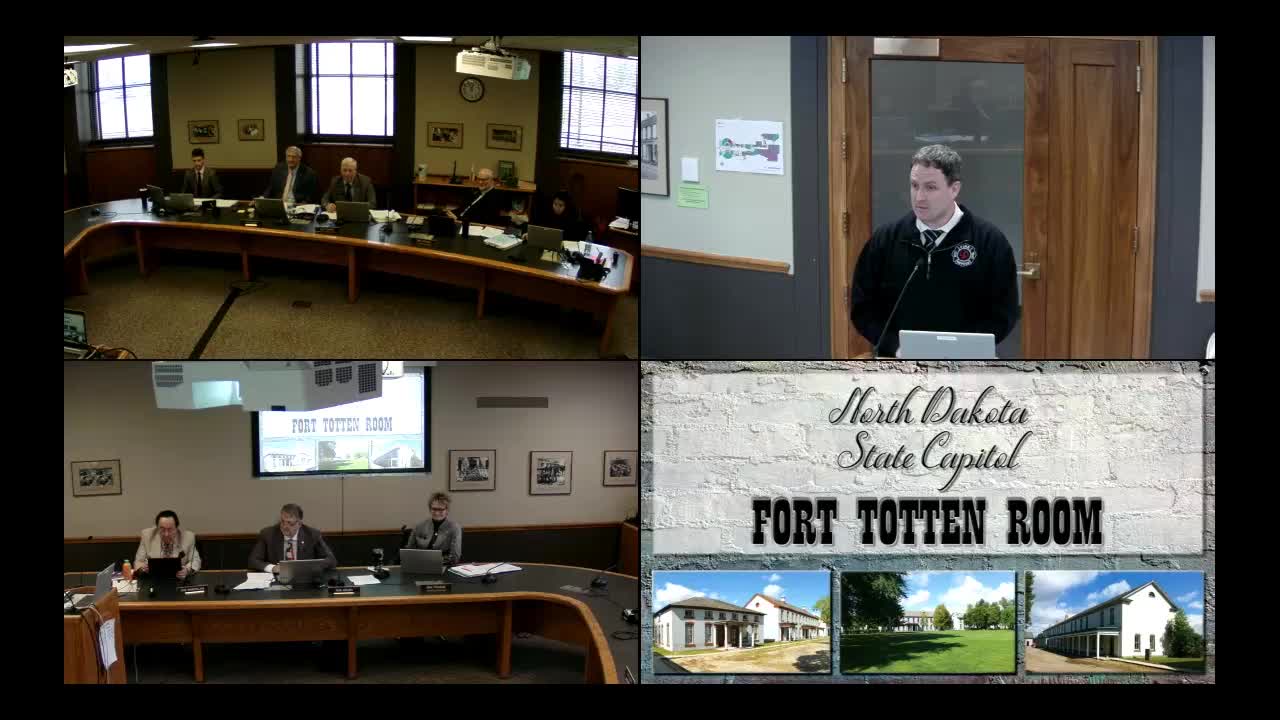Castleton Fire Chief outlines budget and operations to Senate Finance Committee
March 11, 2025 | Finance and Taxation, Senate, Legislative, North Dakota
This article was created by AI summarizing key points discussed. AI makes mistakes, so for full details and context, please refer to the video of the full meeting. Please report any errors so we can fix them. Report an error »

During a recent Senate Finance and Taxation meeting, the Castleton Fire Department's operations and funding strategies took center stage, highlighting the challenges faced by rural fire services in North Dakota. Fire Chief Hill detailed the department's reliance on volunteer firefighters, noting they currently have 29 volunteers covering a vast area, which often stretches their resources thin.
The discussion revealed that the department operates on an annual budget of approximately $300,000, with essential expenses for supplies and equipment ranging between $60,000 to $75,000 each year. Chief Hill emphasized the importance of maintaining a robust budget to ensure operational readiness, especially when it comes to purchasing critical equipment like a used rescue truck, which cost nearly $400,000.
A significant point raised was the department's ISO rating, which affects insurance costs for residents. Chief Hill explained that many rural areas benefit from improved ratings, potentially saving homeowners money on insurance premiums. The department's ability to provide adequate water supply and firefighting resources plays a crucial role in achieving these ratings.
The meeting also touched on the complexities of negotiating revenue with multiple townships, as the department lacks a mill levy in Centricota. Chief Hill described the ongoing conversations with local jurisdictions to ensure fair funding, which involves annual meetings and risk assessments to discuss future needs and funding strategies.
In conclusion, the Castleton Fire Department's operations underscore the vital role of volunteer services in rural communities, as well as the financial and logistical challenges they face. The discussions at the meeting highlighted the need for continued support and resources to maintain effective fire protection services in North Dakota's rural areas.
The discussion revealed that the department operates on an annual budget of approximately $300,000, with essential expenses for supplies and equipment ranging between $60,000 to $75,000 each year. Chief Hill emphasized the importance of maintaining a robust budget to ensure operational readiness, especially when it comes to purchasing critical equipment like a used rescue truck, which cost nearly $400,000.
A significant point raised was the department's ISO rating, which affects insurance costs for residents. Chief Hill explained that many rural areas benefit from improved ratings, potentially saving homeowners money on insurance premiums. The department's ability to provide adequate water supply and firefighting resources plays a crucial role in achieving these ratings.
The meeting also touched on the complexities of negotiating revenue with multiple townships, as the department lacks a mill levy in Centricota. Chief Hill described the ongoing conversations with local jurisdictions to ensure fair funding, which involves annual meetings and risk assessments to discuss future needs and funding strategies.
In conclusion, the Castleton Fire Department's operations underscore the vital role of volunteer services in rural communities, as well as the financial and logistical challenges they face. The discussions at the meeting highlighted the need for continued support and resources to maintain effective fire protection services in North Dakota's rural areas.
View full meeting
This article is based on a recent meeting—watch the full video and explore the complete transcript for deeper insights into the discussion.
View full meeting
